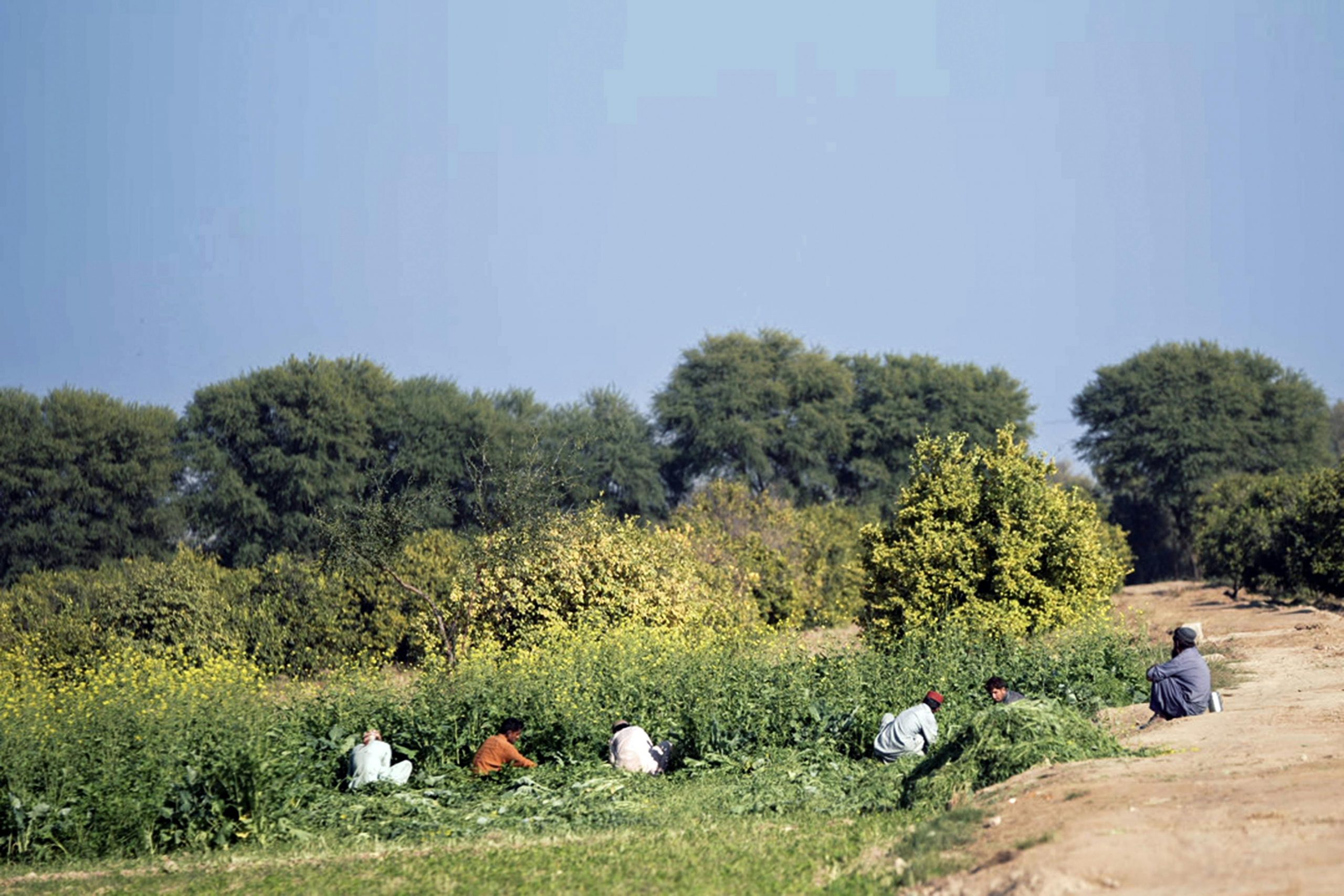Inflation in Pakistan has exhibited volatile trends in recent years touching double-digit figures intermittently. Much of this increase and fluctuation can be attributed specifically to growth in food inflation. This has a significant impact on social welfare, particularly of the poor as such households remain more vulnerable to food inflation because they spend a higher share of their expenditure on food. An increase in food prices coupled with stagnant income levels can significantly lower their purchasing power. As the share of expenditure on food increases, resources are often diverted away from other essential expenses such as healthcare and education. This can be detrimental to the development of human capital, productivity and overall economic growth.
A recent World Bank policy note points out that food inflation and price volatility in Pakistan has exceeded that in other neighbouring countries. Between May 2020 and 2021, prices of food and non-alcoholic beverages increased by 14.83% with urban centres seeing a higher rise (15.3%) compared to rural areas (12.8%). Such a spike in food prices can adversely impact nutrition especially given that 68% of Pakistan’s population is unable to afford a healthy diet. Research shows that the cost of a nutrient-sufficient diet is increasing at a faster rate than the cost of a basic diet in Pakistan. Hence a healthy diet is becoming more and more inaccessible to consumers.
This blog explores the various supply and demand factors and the market structures that lead to food inflation in Pakistan. It explores how the government can play a more facilitative rather than a distortionary role in maintaining food price stability, particularly in response to shocks like Covid-19.
What causes food inflation?
Food price inflation is driven by various demand and supply factors. The interactions between contributory factors are complex and lead to uncompetitive market conditions and failures that raise food price volatility and urban-rural disparities in prices of essential food items. The underlying causes of the price hikes range from inappropriate policies and regulations that distort markets, inhibit competition and discourage private investments, to limited investment in research, innovation and technology transfer.
1. Supply Side: Low agricultural and livestock productivity can keep the supply of domestically produced food below potential, and result in higher food prices. Low productivity is driven to a large extent by high costs of production and inefficient use of scarce resources such as land and irrigation water. Food prices are also impacted by inefficiencies in the supply chain such as lack of storage and processing facilities, particularly for perishable crops. Speculative behaviours like hoarding also leads to artificial shortages and can drive up food prices. Moreover, Pakistan remains vulnerable to the effects of climate change, with farmlands routinely affected by floods, locust swarms and droughts that further reduce farm output.
2. Demand Side: Pakistan has one of the highest population growth rates (2% in 2020) in the region. It also has a rising GDP growth rate which has resulted in an increasing per capita income. Higher capacity to pay not only changes the magnitude of demand but also consumption patterns. When supply is unable to match rising demand it can lead to shortages and price hikes.
3. Domestic & International Market Shocks: Due to poor productivity, Pakistan remains a net importer of food and is therefore exposed to global price fluctuations, currency fluctuations and exchange rate volatility. Fluctuations in oil and energy prices have also had a significant impact on the cost of production.
4. Governmental Inefficiencies: The government has a responsibility to manage food inflation and protect the poor from price shocks and ensure food security through procurement, exports and import subsidies. However, government interference via distortionary (and often reactionary) policies that disregard the cost of policy uncertainty and their ripple effects on the food system can make the market more vulnerable to shocks and manipulation. This can result in a suboptimal production mix, inefficient use of scarce resources, low private sector participation, and low integration in global value chains, all of which reduce consumer and producer welfare and increase the fiscal burden.
Reign of the middle-men (Arthiyas)
An important power dynamic within the supply chain is represented by the role played by middlemen. Majority of farmers in Pakistan are small sized who face two main constraints: 1) lack of access to credit and 2) poor connectivity to markets. In the absence of access to formal credit, middlemen fill this vacuum by providing informal credit and inputs to farmers. To maximize returns while minimizing risk, middlemen also assume the role of sales agents either by facilitating the sale of the harvested crop or by setting up arrangements which bind the farmers to sell their entire produce to them. In this way middlemen buy produce for minimal prices and then sell them at much higher prices retaining a hefty profit for themselves.
Ensuring farmers get reasonable margins for their produce is key to ensuring greater productivity and encouraging investment and innovation in agriculture. This can only effectively be done by providing multi-sectoral support in the form of technical advice, high quality inputs (seeds, fertilizers, insecticides) and (most importantly) market integration and shortening of the value chain. A key factor influencing the commission agent’s profit is the information asymmetry between market actors. While the Punjab Government has initiated efforts to disseminate information about agricultural produce prices, impact of these initiatives remains limited.
Plight of milk farmers
The government has historically set price caps for milk and meat which does little to control price at the retail level but significantly discourages investment in expanding production and improving quality. These price caps rarely incorporate changes in production costs and offer insufficient returns for farmers to improve the quality of their products. Once the price is set, it is rarely monitored at the point of sale, which results in consumers having to pay higher prices, unless they are willing to buy poor quality adulterated products at government prices. Such price-setting leads to profit-maximization by the intermediary while the producer ends up receiving the capped price. Low profit margins for the producer leave little for investment in storage, value-addition, or production improvements. This makes the supply chain vulnerable to shocks such as Covid-19.
Price control mechanism
When the prices at various wholesale markets are recorded and their average is taken, it can be observed that the government allows for a 10 to 15% markup and then sets the rate for the following day. This process is inefficient as it creates winners and losers. The Deputy Commissioner’s (DC) office weekly monitors and regulates the prices of fresh produce both at the auction and the retail level. The distortionary effect of this price settling is seen at most retail outlets where DC regulated produce is kept separately and is typically of subpar quality. This leads to loss in consumer welfare. Additionally, price setting encourages fraudulent behaviors and disincentivizes farmers up in the chain from innovating and investing in packing processes which reduce post-harvest losses. Buyers and sellers are aware of losses incurred in transit and the prices set incorporate those potential losses which essentially mean that producers lose out the most by getting very low prices. Understanding these dynamics can help policymakers determine the locus of the intervention and ensure reforms which not only benefit consumers but producers as well.
Gaps in data
Quality data is also essential not only for long-term policy making but for producers when making decisions about their resource allocations, investors and consumers.One of the biggest causes for the food inflation in Pakistan is lack of documentation – this impacts the entire supply and demand chain. Farmers, middlemen and logistical partners are all undocumented because they want to avoid paying taxess. Resultantly the statistical data collected is flawed due to which governments (federal or provincial) are unable to develop strategies based on numbers. In a move to address this issue, the Punjab Government has started collecting data on all the middlemen in the province which has aided in decreasing intra-district price volatility.
Role of the government
The government heavily influences agriculture markets by fixing minimum support prices, providing input subsidies, restricting movements of agriculture commodities, and imposing tariff/subsidy on export and import. All these interventions affect consumer and producer welfare and increase the fiscal burden. Consumers end up paying higher than international prices with a general perception that even producers are not receiving the announced minimum price for their products.
It is imperative that measures are taken to curtail losses incurred in transit. The more perishable the commodity, lower the share of consumer price given to the farmer. Limited profit margins greatly reduce resource availability and incentive for reinvestment in measures which minimize post-harvest losses. Other losses that occur during transportation and at the marketing stage, can be minimized by encouraging private sector participation (similar to what was seen in China, Kenya and South Korea) to provide refrigerated transportation, better organization, storage and grading at market. The PAMRA (Punjab Agricutural Marketing Regulatory Act) in Punjab, which establishes a new, more transparent legal regime to market agricultural produce to protect the free flow of produce and to encourage food supplies is a step in the right direction. Additionally,the Punjab government has removed barriers from entering the market, enabling several private actors to set up fruits and vegetable markets, thus increasing competition and lowering prices.
Way forward
Food price inflation should be a crucial agenda for the government specially to protect the poor from price shocks and to tackle undernutrition. To ensure government interventions do not distort the market leaving it even less efficient and responsive than before, it is important that the costs of these unintended consequences are weighed against the benefits when making policy decisions. Policymakers need to base decisions on an understanding of the food system such that their policies/interventions minimise distortions. The government should therefore ensure that markets perform efficiently while fulfilling its development outcomes.
Short-run solutions are not beneficial for Pakistan. The government needs to devise robust, forward-looking policies. Timely and effective interventions are necessary and should include measures that can handle unpredictable shocks and ensure long-term resilient food flows.





